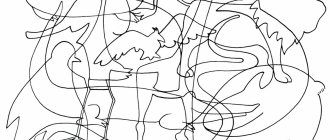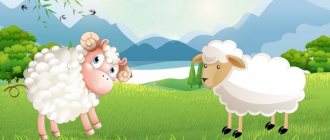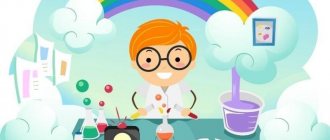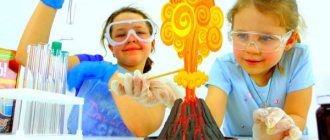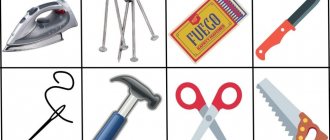Dancing for children
This method develops the art of communication, the ability to work in a team, the ability to negotiate, self-service and self-awareness skills, the ability to work independently: the child confidently sets goals and objectives for himself, becomes responsible for his actions and brings what he started to the end, monitoring the correctness of execution or the presence of errors.
The essence of the method
The Montessori method has three components: a child , a prepared development environment and a teacher (teaching adult).
The developmental environment is the main pedagogical technique. The classroom (environment) is divided into zones in accordance with the cognitive and psychological needs of children of a certain age group.
The Montessori environment for children from eight months to three years old includes zones for exercises with bulk materials, exercises with water, a cause-and-effect zone, zones for sensory development, speech development, productive visual activity and the development of gross motor skills; for children from three to six years old, it includes zones for exercises in practical life, sensory education, a mathematical zone and zones for the Russian language, space, productive art activities and the development of gross motor skills.
The child chooses what material to work with and how much time to devote to it. Certain rules governing activities in a group allow children, on the one hand, to learn to respect the people and space around them, and on the other hand, to feel protected.
The teacher in a Montessori group has his own role and task. In addition to unconditional love and acceptance of each child as he is, the teacher is also an intermediary between the child and the Montessori environment. “Help me do it myself!” - this is what a child expects from an adult, and this is precisely the role of adults in a Montessori group. The teacher sensitively determines when it is necessary to provide assistance, and when it is necessary to give the child the opportunity to work independently and with concentration, observes the work and development of the environment by each child, analyzing the dynamics in order to correctly promote further progress.
This is the same method when a child is treated with truly respect, care and individuality. Montessori teachers know for sure that all children strive for development from birth. Therefore, children should not be forced to study, but conditions should be created that best suit their cognitive needs.
A child in Montessori pedagogy is a PERSONALITY .
“To raise a child, you need to know him, to know him, you need to watch him, and in order to watch him, you need to give him freedom.” Maria Montessori
How and where to start?
- You can start from the moment when the baby holds his head well. And slowly, with him in your arms, you can make the first curtsies. Then you can take his hand in yours and spin around like in partner dances. Then it can be waves - you can hold the baby in different positions and rock him a little. Smile at him and hum. These are the very first dance lessons.
- It is better to choose daytime hours for classes, since children get overexcited very quickly and may have difficulty falling asleep or sleep restlessly after active activities.
- Choose the right time. The child is well-fed and in a good mood. But if he is distracted by some important activity, such as putting out candy wrappers, I don’t know if you can tear him away from it. Maybe you turn on the music and he will drop everything himself. In general, look at the situation.
- If your child suddenly refuses to do something, don’t force him, put it off until later.
- Of course, to dance at home, you will have to make room for it. So that the child can spin around, and squat, and wave his arms and not run into the furniture.
- Start dancing yourself and call your baby, kids usually agree with pleasure.
- Then later you can introduce so-called musical instruments into your activities - these can be wooden spoons, maracas, bells and whatever the child desires.
Children's dance school
Dance directions
Modern choreography
Rhythm, plasticity, stretching - all this is combined in modern children's choreography. This is one of the most popular trends in modern dance schools for children.
Modern
This trend appeared in the USA at the beginning of the last century and is quickly gaining popularity in children's dance schools. Through modern training, young dancers learn not only to control their body, to move from a state of complete relaxation to a state of tone and rhythm, but also gain spiritual harmony and clarity of thought.
Hip-hop
One of the most popular “street” styles, which combines elements from breakdancing, locking and other freestyle styles. The main features of hip-hop in children's dance schools are clear movements and a fair amount of improvisation.
Jazz funk
This style was formed in the 20s of the last century at the intersection of hip-hop, pop art, and jazz styles. In choreography schools in Moscow and other cities, this direction is less developed than others, but the abrupt, sharp movements combined with the smoothness and plasticity characteristic of this dance find their fans.
Jazz Modern
Modern expression, jazz rhythm, and classical choreography techniques are woven together into a unique jazz-modern dance direction. This direction is dynamic and emotional. The main elements of the dance are jumps, rotations, rhythmic and smooth movements of the body. It is especially useful to send an active child to modern jazz dancing. This is a good way to release energy.
House
House is often confused with hip-hop, but this dance in choreography schools for children has its own differences. It is more flexible and helps develop the child’s flexibility, sense of balance and ability to control his body.
R'N'B
This is one of the most fashionable trends in dance schools for children. Clear, fashionable, stylish R'n'B appeals to children of all ages. The dance has a lot of springy movements, turns, and slides, which develop a sense of rhythm and flexibility in children. In addition, this is one of the types of choreography for children and adults, which is often used in music videos and stage productions by stars.
Street jazz
This style came to dance schools for children from street festivals. This is a free dance that not only combines elements from different directions, but also includes a lot of improvisation. The arms, body and legs are equally involved, which makes street jazz an excellent workout and contributes to the physical development of the child.
Features and benefits of classes
For children, dancing at school will become a serious hobby and favorite pastime thanks to the teaching methodology, which has the following advantages:
- Children are taught by experienced teachers.
- Children are offered an individual education program.
- Developing in children the ability to perform on stage and win the sympathy of the audience.
- Lessons for young children take the form of games.
- Children are given exercises to develop a sense of rhythm, hearing and physical fitness.
As a result of attending classes, the child will learn to better control his body, strengthen his muscle corset, master the skill of improvisation, become stronger and more resilient, and develop determination and perseverance.
To instill a love of dance in children from an early age, sign up for a trial lesson on our website!
Repertoire and movements
To begin, offer the music you have, it could be any children's song collections or just children's music.
It can also be natural or modern music.
I think that since we will be dancing with the baby, the music should be baby music. And you watch your child, which one he likes best, and choose that one.
It can include both just music and children's videos.
But the important point is that the mother acts as a choreographer and first shows everything herself, then we repeat the movements with the child’s hands.
Then, as he learns, the child will perform the movements himself.
Of course, children aged one or two will perform the simplest movements. Use songs with movements; Zheleznova’s collections are well suited for such activities.
To begin with, do not take too many songs, 3-4 will be enough. Then you can increase your practice to 4-5 songs.
We started learning 4-5 songs. Fix the material the next day and the next. After the baby has already memorized these songs enough, change them to new ones. But if the baby asks for a specific one, then do not refuse it.
Do not make the music too loud, as this may frighten the child or discourage the child from dancing.
What will the child receive in the first lesson?
- Communication with peers. Your baby will meet other kids, chat and maybe even find a friend.
- Development of coordination. While learning the elements, the body and brain work. On the one hand, there is an active development of intelligence, because the baby is learning new things. On the other hand, it improves plasticity, flexibility and coordination, which are necessary for harmonious development.
- Positive emotions. Dance training is an active pastime. Children laugh while they repeat new elements after the teacher. And during movements, as well as during sports, the hormone of joy is produced.
The baby will return home calmer or, on the contrary, joyful, and will begin to show his parents what movements he has learned and tell him who he met.

